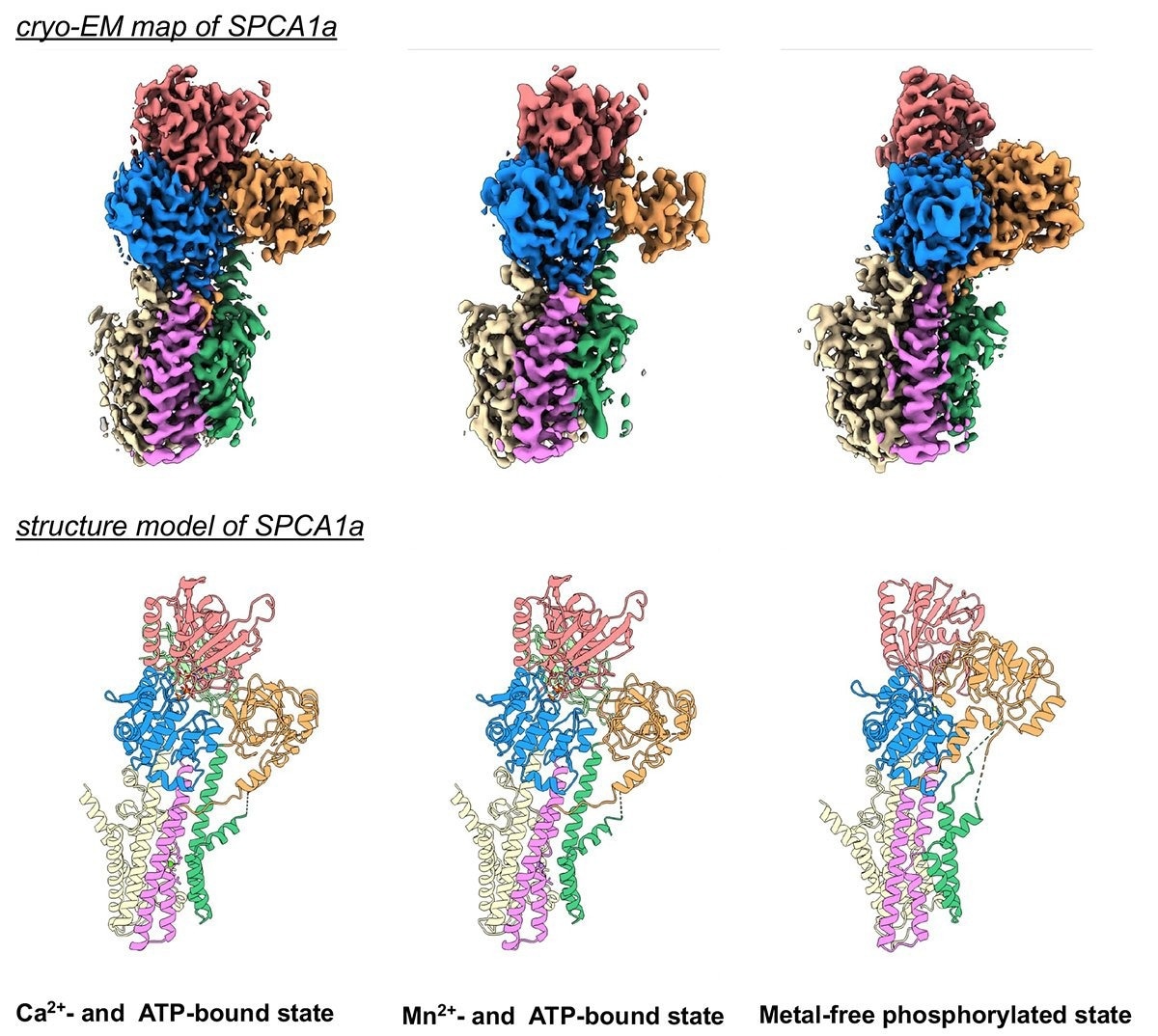A rare, genetic disorder known as Hailey-Hailey disease causes patches of blisters to develop mainly in the folds of skin under the breasts, in the groin, and the armpits. It is caused by a genetic mutation that affects a protein involved in moving calcium and manganese ions out of the cell’s cytoplasm and into an organelle called the Golgi apparatus.
 Cryo-EM maps and structures of human SPCA1a in three intermediate states. Image Credit: Kenji Inaba
Cryo-EM maps and structures of human SPCA1a in three intermediate states. Image Credit: Kenji Inaba
Together with their colleagues from Japan, Tohoku University researchers have found several structural features of this protein that could help in explaining how it functions.
The research results, which were published in the journal Science Advances, contribute to the development of foundations for studying the treatment of Hailey-Hailey disease and other neurodegenerative diseases.
The protein that the group investigated is known as secretory pathway Ca2+/Mn2+–ATPase or SPCA. It is found in the Golgi apparatus, a sac-like cellular structure that is essential for regulating protein quality prior to release into cells. In a way, the Golgi apparatus serves as a calcium ion storage container.
Maintaining the appropriate calcium ion balance inside cells is essential for their daily functions since calcium ions are crucial for cell signaling processes and are necessary for proteins to function properly.
SPCA is involved in the movement of calcium ions as well as the prevention of the hazardous buildup of manganese in the cytoplasm of cells, which can impact the survival of nerve cells. Up to this point, nothing had been known about the composition or operation of SPCA.
Our study succeeded in determining high-resolution 3D structures of human SPCA1a using a cryo-electron microscopy technology. The analysis revealed how SPCA1a binds to calcium and manganese ions and transports them into the Golgi lumen. We also mapped where mutations on the protein can cause functional defects and eventually lead to Hailey-Hailey disease. Thus, the knowledge about the mechanisms of SPCA1a regulation revealed by our study will be of physiological and medical significance.”
Kenji Inaba, Study Lead and Structural Biologist, Tohoku University
By freezing samples at extremely low temperatures and immobilizing protein molecular movement, cryo-electron microscopy can study the samples. However, microscope records can only show one distinct state since proteins frequently migrate and alter their form as they carry out their routine duties.
The method was employed in the Tohoku study to clarify three different protein states: phosphorylated, bound to metal ions (calcium and manganese), and bound to the energy-providing molecule ATP. It provided three images of the several states that the protein generally switches between.
Inaba added, “Although the study has provided many important insights into SPCA1a, it is not enough to describe the whole picture. A comprehensive understanding of the transport of calcium and manganese by SPCA will reveal how these ions are properly balanced inside cells and could provide insights into how mutations in the protein cause Hailey-Hailey disease and other neurodegenerative disorders.”
Source:
Journal reference:
Chen, Z., et al. (2023). Cryo-EM structures of human SPCA1a reveal the mechanism of Ca2+/Mn2+ transport into the Golgi apparatus. Science Advances. doi.org/10.1126/sciadv.add9742